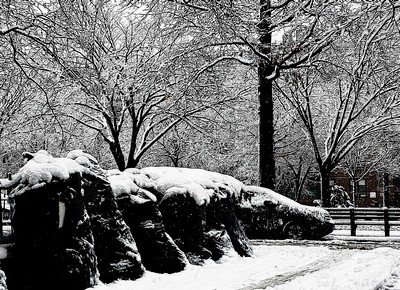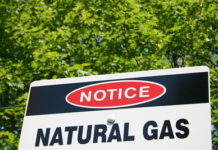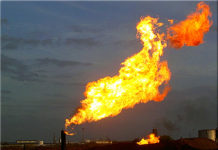Cold weather is finally arriving across the US that can actually have an impact on natural gas prices. The updated forecasts for early to mid-November came out on Friday and they are calling for much colder weather than expected. While temperatures are currently cold across much of the Midwest and Northeast, the cold blast next week is expected to spread into the South as well. This should lead to solid demand for natural gas that is above average for this time of year.
Prices of natural gas gapped higher on Monday morning and gained nearly four percent on the day. December natural gas is currently trading at $2.824. The market was able to hold the majority of the gains on the day, which is a positive sign. This puts the market at heavy resistance between $2.75 and $2.90 that has contained the upside action through the last five months. The question is whether the market will be able to break through these levels and reverse the trend or negative fundamentals will eventually drive price back down to the low 2’s.
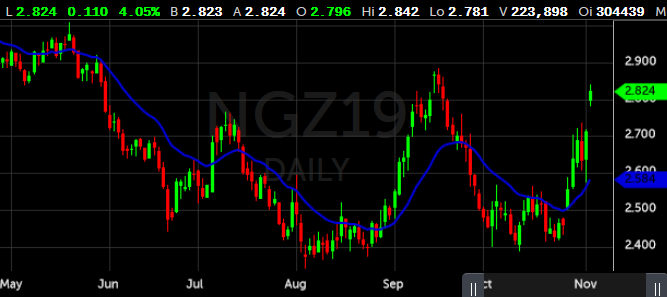
Can the Market Overcome Excess Supplies?
Current inventories of natural gas stand at 3.695 trillion cubic feet. This is 559 billion cubic feet above a year ago and 52 billion above the five year average. Those numbers really don’t justify prices above $3, unless expectations turn to excessively cold weather eating into those supplies. The energy markets and grain markets have weather scares every year and typically markets rally from this type of news. The rallies are usually short-lived, but sometimes they dramatically change the fundamentals of a market.
There has been some divergence with the GFS and European weather models. The European model forecasts slightly warmer weather then the GFS. The market has made a large move the last couple days and probably factored in the weather impact at this point. Some traders who were on the short side probably had to run for the exits today. The market could give back a good portion of the gains if the weather doesn’t materialize as expected during the next couple of weeks.
The reality is the weather in the next two weeks won’t necessarily turn natural gas into a bull market. Natural gas production is keeping pace with demand and it will take prolonged and extreme weather this winter to drastically change the supply/demand equation.
Natural Gas Rig Count
There is another variable that needs to be added to the equation. The natural gas rig count has been trending lower and is at the lowest level since December 2016. The oil rig count is in a similar situation. I’ve heard some discussion about this and it should be a bullish sign for natural gas, as it indicates there are less rigs pumping out natural gas. That may be true, but only to a certain degree.
It certainly is a good talking point, but we haven’t seen a drop in production for gas or oil at this point, even though the number of rigs operating are in decline. An explanation for this may rest in the fact that rigs are becoming more efficient and the rigs operating in the large shale deposits are pumping out more per rig these days. However, it should still be considered at least a slightly bullish sign as there is less desire to add marginal rigs to add production from the oil and gas producers.
Bottom Line Analysis
Natural gas bulls are probably eyeing the $3 level after Monday’s gap higher trade. It might appear as if there is a good deal of upside potential in this market when looking at the weekly chart. The problem is that current inventories are more than 500 billion cubic feet above last year. That is about 15 percent of the total current inventory. There was also a crazy short squeeze last year that drove prices sharply higher.
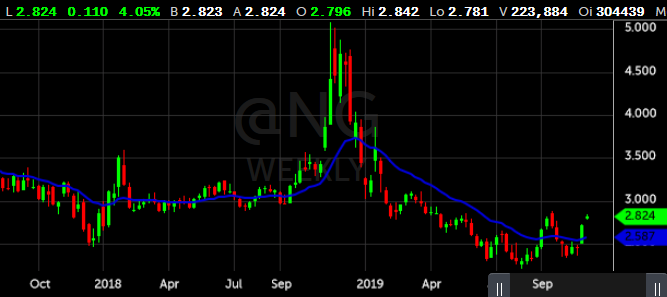
The weather will have to be much colder than normal and the economic numbers will have to be good in order to sustain a rally in this market. Anything could happen when it comes to natural gas, but I am cautious chasing the market higher from here. I would like to see how the market performs this week, especially after the gap on Monday.
I prefer to see the market run out of momentum and play the downside. Traders will undoubtedly cover short positions if the market continues to move higher, which will add fuel. However, it will probably have to move well past $3 before the funds begin to reverse their short positions and get bullish. Weather scares are typically good opportunities for trading. The key is to not get anxious and chase the market. I don’t see anything yet to warrant a sizable rally. I favor selling opportunities until the trend changes.

